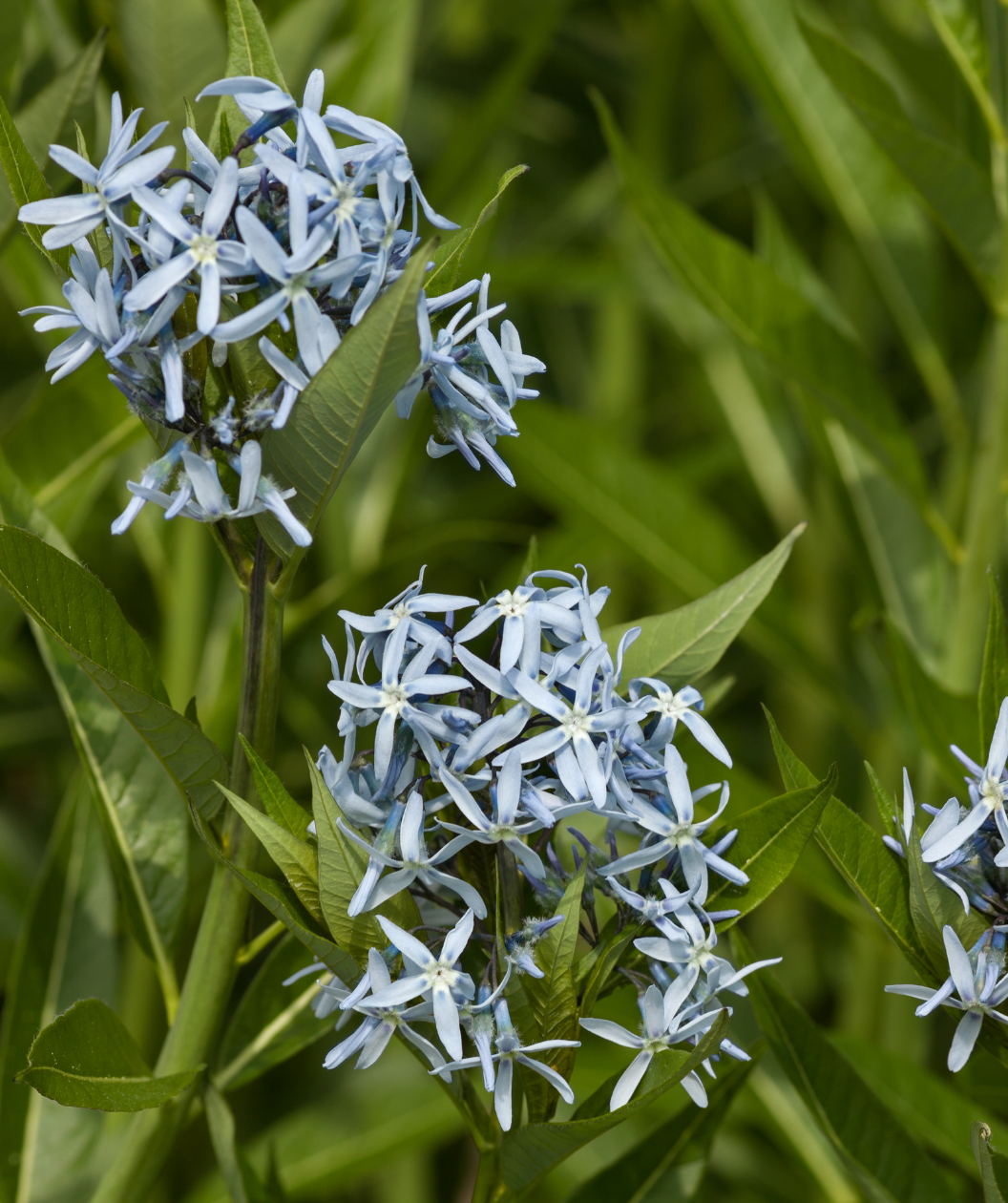




SKY-BLUE FLOWERING STARS, AND A VIBRANT YELLOW FALL SHOW
FEATURES:
- In spring, clusters of pale-blue flowers bloom like stars through summer
- Chartreuse feathering leaves hold their bright green color from spring to fall when it transform to a bright golden color
- In warmer climates the foliage stays yellow through winter
- Hand Selected, Fresh from the Grower
- Ships in a plant-safe designed box
Growth Facts
- Hardiness Zone: 5-8
- Mature Height: 2-3' tall
- Mature Width: 2-3' wide
- Exposure: Full Sun/Part Shade
- Spacing: 2-3' apart
SKY-BLUE FLOWERING STARS, AND A VIBRANT YELLOW FALL SHOW
FEATURES:
- In spring, clusters of pale-blue flowers bloom like stars through summer
- Chartreuse feathering leaves hold their bright green color from spring to fall when it transform to a bright golden color
- In warmer climates the foliage stays yellow through winter
- Hand Selected, Fresh from the Grower
- Ships in a plant-safe designed box
Growth Facts
- Hardiness Zone: 5-8
- Mature Height: 2-3' tall
- Mature Width: 2-3' wide
- Exposure: Full Sun/Part Shade
- Spacing: 2-3' apart
Why plant Arkansas Blue Star?
Arkansas Bluestar isn’t exactly a household name, but more and more people are falling in love with this dreamy Spirit. What’s the fuss about? Fabulous foliage! Arkansas Bluestar makes a fluffy mound of fine green foliage that’s as soft as feathers. Though it’s a good-sized plant, it gives an airy feel to the garden. But great texture is just the beginning. In fall, the leaves turn a rich golden color. And that’s still not the whole story! Yet another seasonal drama occurs in spring, when pale sky-blue flower clusters open, attracting early-season butterflies. This plant is truly a joy from spring through late fall.
Botanically speaking, Arkansas Bluestar is a relatively new discovery, having first been described in 1942. It is native to a small region that extends from Arkansas to Oklahoma and was initially spotted by a man named Leslie Hubricht. Hubricht was a self-educated biologist whose formal education stopped after only one semester of high school. He was working at the Missouri Botanical Garden at the time of his discovery, though his true passion wasn’t plants, but mollusks. In fact, he named 81 new snails over the course of his studies! But we digress. Arkansas Bluestar languished in obscurity until about the 1990s, when it finally started to get the respect it deserved.
How to use Arkansas Blue Star in the landscape?
Landscape designers and gardeners in the know have been enchanted with Arkansas Bluestar, or Arkansas Amsonia, for a couple of decades now. The Perennial Plant Association got on board in 2011 and named it their Perennial Plant of the Year. This honor goes to a Spirit the PPA feels is beautiful in multiple seasons, adaptable, easy to grow, and resistant to pests and diseases.
Planting Zones
Hardiness Zone: 5-8
How To Plant Arkansas Blue Star
Give Arkansas Bluestar room to grow—it makes a rather large plant, though it takes a while to reach its mature size. It prefers full sun but will tolerate part shade and will accept any kind of soil as long as it drains well. Water regularly while it is getting established. Once it is well rooted, it will be fairly drought tolerant. Arkansas Bluestar may be cut back by half after the blooms are spent to encourage tighter, bushier growth. Cut the whole plant down in late winter or whenever it starts to look unsightly. Pests and diseases are rarely a concern with this tough native Spirit.
How To Water
Water as soon as Arkansas Blue Star arrives! Blue Stars plants need to be watered regularly to maintain evenly moist soil to properly establish in the landscape.




